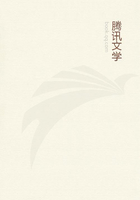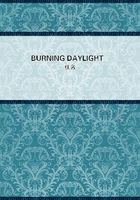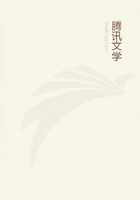In fishes the teeth are all sharp; so that these animals can divide their food, though imperfectly. For it is impossible for a fish to linger or spend time in the act of mastication, and therefore they have no teeth that are flat or suitable for grinding; for such teeth would be to no purpose. The oesophagus again in some fishes is entirely wanting, and in the rest is but short. In order, however, to facilitate the concoction of the food, some of them, as the Cestreus (mullet), have a fleshy stomach resembling that of a bird; while most of them have numerous processes close against the stomach, to serve as a sort of antechamber in which the food may be stored up and undergo putrefaction and concoction. There is contrast between fishes and birds in the position of these processes. For in fishes they are placed close to the stomach; while in birds, if present at all, they are lower down, near the end of the gut. Some of the Vivipara also have processes connected with the lower part of the gut which serve the same purpose as that stated above.
The whole tribe of fishes is of gluttonous appetite, owing to the arrangements for the reduction of their food being very imperfect, and much of it consequently passing through them without undergoing concoction; and, of all, those are the most gluttonous that have a straight intestine. For as the passage of food in such cases is rapid, and the enjoyment derived from it in consequence but brief, it follows of necessity that the return of appetite is also speedy.
It has already been mentioned that in animals with front teeth in both jaws the stomach is of small size. It may be classed pretty nearly always under one or other of two headings, namely as resembling the stomach of the dog, or as resembling the stomach of the pig. In the pig the stomach is larger than in the dog, and presents certain folds of moderate size, the purpose of which is to lengthen out the period of concoction; while the stomach of the dog is of small size, not much larger in calibre than the gut, and smooth on the internal surface.
Not much larger, I say, than the gut; for in all animals after the stomach comes the gut. This, like the stomach, presents numerous modifications. For in some animals it is uniform, when uncoiled, and alike throughout, while in others it differs in different portions.
Thus in some cases it is wider in the neighbourhood of the stomach, and narrower towards the other end; and this explains by the way why dogs have to strain so much in discharging their excrement. But in most animals it is the upper portion that is the narrower and the lower that is of greater width.
Of greater length than in other animals, and much convoluted, are the intestines of those that have horns. These intestines, moreover, as also the stomach, are of ampler volume, in accordance with the larger size of the body. For animals with horns are, as a rule, animals of no small bulk, because of the thorough elaboration which their food undergoes. The gut, except in those animals where it is straight, invariably widens out as we get farther from the stomach and come to what is called the colon, and to a kind of caecal dilatation. After this it again becomes narrower and convoluted.
Then succeeds a straight portion which runs right on to the vent. This vent is known as the anus, and is in some animals surrounded by fat, in others not so. All these parts have been so contrived by nature as to harmonize with the various operations that relate to the food and its residue. For, as the residual food gets farther on and lower down, the space to contain it enlarges, allowing it to remain stationary and undergo conversion. Thus is it in those animals which, owing either to their large size, or to the heat of the parts concerned, require more nutriment, and consume more fodder than the rest.
Neither is it without a purpose, that, just as a narrower gut succeeds to the upper stomach, so also does the residual food, when its goodness is thoroughly exhausted, pass from the colon and the ample space of the lower stomach into a narrower channel and into the spiral coil. For so nature can regulate her expenditure and prevent the excremental residue from being discharged all at once.
In all such animals, however, as have to be comparatively moderate in their alimentation, the lower stomach presents no wide and roomy spaces, though their gut is not straight, but has a number of convolutions. For amplitude of space causes desire for ample food, and straightness of the intestine causes quick return of appetite. And thus it is that all animals whose food receptacles are either simple or spacious are of gluttonous habits, the latter eating enormously at a meal, the former making meals at short intervals.
Again, since the food in the upper stomach, having just been swallowed, must of necessity be quite fresh, while that which has reached the lower stomach must have had its juices exhausted and resemble dung, it follows of necessity that there must also be some intermediate part, in which the change may be effected, and where the food will be neither perfectly fresh nor yet dung. And thus it is that, in all such animals as we are now considering, there is found what is called the jejunum; which is a part of the small gut, of the gut, that is, which comes next to the stomach. For this jejunum lies between the upper cavity which contains the yet unconcocted food and the lower cavity which holds the residual matter, which by the time it has got here has become worthless. There is a jejunum in all these animals, but it is only plainly discernible in those of large size, and this only when they have abstained from food for a certain time.
For then alone can one hit on the exact period when the food lies half-way between the upper and lower cavities; a period which is very short, for the time occupied in the transition of food is but brief. In females this jejunum may occupy any part whatsoever of the upper intestine, but in males it comes just before the caecum and the lower stomach.















